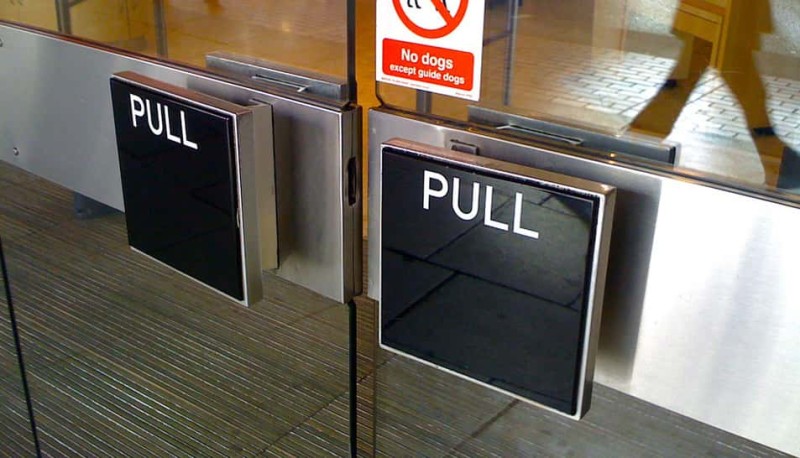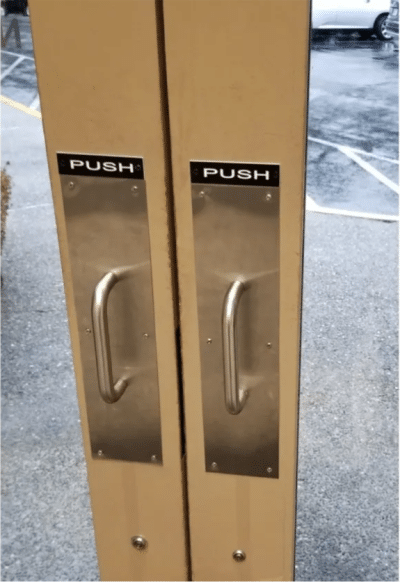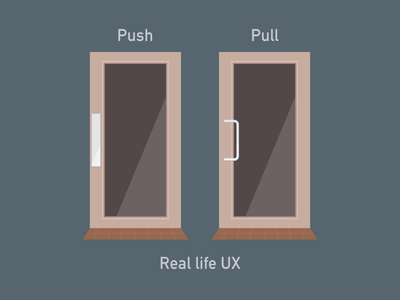
Have you ever come across one of those doors that people perpetually get wrong?
Where people push when they should pull and vice versa?
Doors that resort to signage to help clue people in? Like this:
Those are called Norman Doors, after the industrial design legend Donald Norman.
His contention is that people intuitively and subconsciously respond to the design language of the doors themselves.
So when the design language mismatches the function, people automatically attempt the wrong action.
In the header image, the broad, flat black platforms look like affordances for pushing.
So that’s what people do — only to get jammed up against the non-moving door.
Similarly, the doors in the side image have pulling handles attached, when the function requires users to push.
In both cases, the building managers band-aided the problem with signage.
But I’ll guarantee you people continue to routinely screw it up. Even people who pass through the doors on a daily basis.
A far better fix would be to install proper pull handles on the doors in the header image and to install those black pushing pads from the header image on the doors in the side image.

Got it? Great.
So…. what’s this gotta do with high-performing lead generation?
Everything.
What Is Your Branding Intuitively and Subconsciously Communicating to Prospects?
Your brand voice and attitude as well as your brand codes all communicate on an intuitive and subconscious level to prospective customers.
Let’s call this your “brand design language.”
So when that brand design language mismatches your business model, you run into trouble.
When you get leads through discount offers, but your business is set-up to provide a premium product or service, you’ve got a mismatch.
And that mismatch, wherein you attract transactional customers to a relational business, inevitably drives low conversions, bad reviews, and low margin.
If your business was set up as a low-priced provider, there’d be no problem. Your brand design language would match the customer experience, your operations, and your business model / economic engine.
If you attract bargain-seekers and price shoppers, but you’re set-up to profitably do business with that type of customer, you’re all set.
Walmart does a roaring trade doing exactly that.
Conversely, if your ads used a brand design language that attracted relational customers who place a premium on convenience, quality, expert help, and professionalism — and if your business was set-up to provide that level of customer experience, then you’d be all set.
Apple became one of the most profitable and valuable companies in the world doing that.
Either way works, so long as you are matched up on brand design language, customer experience, and business model.
It’s exactly like push doors work and pull doors work whenever the design language of the door matches the function.
For lead generation, the key is to craft ads with the right brand design language to attract the right kind of prospects into your business.
This will skyrocket your conversion rate and help you to make the most of your lead-gen efforts.
P.S. Here’s a cool video that goes a bit deeper on Norman Doors and Donald Norman, if you’re interested.
- Are You Paying for Too Much for the Wrong Keywords? - July 15, 2024
- Dominate Your Market Like Rolex — 4 Powerful Branding Lessons - July 3, 2024
- Military-Grade Persuasion for Your Branding - June 25, 2024
